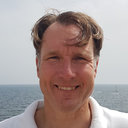About
23
Publications
18,739
Reads
How we measure 'reads'
A 'read' is counted each time someone views a publication summary (such as the title, abstract, and list of authors), clicks on a figure, or views or downloads the full-text. Learn more
1,206
Citations
Introduction
Culturing and harvest of the sea squirt, tunicate, Ciona intestinalis. Production of fish feed ingredients (sustainable proteins and fats) from Ciona. Production of a great tasting marine umami fond made of Ciona. Marine litter: microplastic, microlitter, macroplastic and macrolitter. Critical thinking of the present university research: Why are researchers driven by emotions and funding? That is not the way we learnt proper research methodology.
Additional affiliations
January 2013 - May 2015
January 2001 - present
N-research
Position
- Researcher
Description
- N-research is a marine knowledge-based company. We work both as technological / environmental consultants as well as applied researchers. The best company to work at says the involved.
Publications
Publications (23)
To evolve fish farming in an eco-efficient way, feed production must become less dependent on forage fish-based ingredients and make more use of low trophic level organisms, including microalgae, higher plants, as filter feeding organisms and other ingredients with low competition to established food value chains. Diets nearly free of fish meal and...
Background
One of the sustainable development goals focuses on the biomass-based production as a replacement for fossil-based commodities. A novel feedstock with vast potentials is tunicate biomass, which can be pretreated and fermented in a similar way to lignocellulose. Ciona intestinalis is a marine filter feeder that is cultivated to produce fi...
Biofuels are essential for transitioning to a sustainable society. This switch can be achieved by introducing novel feedstocks and technologies for efficient and economically feasible biofuel production. Second-generation biofuels are particularly advantageous as they are produced from non-edible lignocellulosic biomass derived primarily from agric...
Eutrophication in the North and Baltic Seas is a major problem to the marine environment and the communities depending on it. To counteract this, the Swedish Marine and Water Authority suggested financial support for measures that increase the uptake of nutrients from the water by e.g. marine organisms and support for the utilization of these organ...
The current use of fossil fuels is unsustainable as associated greenhouse gas (GHG) emissions are the cause of climate change and it is based on non-renewable fossil resources. As an alternative the European Union (EU) has decided to transform into a highly efficient, low-carbon, bio-based economy. In order to facilitate the shift from fossil to re...
Two methods for marine microlitter sampling were compared in the Gulf of Finland, northern Baltic Sea: manta trawl (333μm) and a submersible pump (300 or 100μm). Concentrations of microlitter (microplastics, combustion particles, non-synthetic fibres) in the samples collected with both methods and filter sizes remained <10particlesm(-3). The pump w...
In a 2.5-year-long environmental engineering experiment in the By Fjord, surface water was pumped into the deepwater where the frequency of deepwater renewals increased by a factor of 10. During the experiment, the deepwater became long-term oxic, and nitrate became the dominating dissolved inorganic nitrogen component. The amount of phosphate in t...
Over the past century, advances in technology and historical events such as climate change have resulted in significant changes
in the exploitation pattern, population sizes and the potential yield of fish stocks. These variations provide contrast in
the data that improves our knowledge on population dynamics and our ability to develop management s...
Many dinoflagellate species form dormant resting cysts as a part of their life cycle, and in some freshwater species, hatching of these cysts can be delayed by the presence of water-borne signals from grazing zooplankton. Some marine dinoflagellates can form temporary cysts, which may function to resist unfavourable short-term environmental conditi...
In order to study the relationship between planktonic dinoflagellates, cyst production and environmental factors, a sediment trap study was conducted in the Gullmar Fjord, Swedish west coast, during 21 days in May-June 1998. Five locations for sediment traps were randomly selected every third day. The traps were moored at the five locations and mov...
The changes in phytoplankton community in water passing a large natural population of the blue mussels Mytilus edulis L.. in the Oresund strait between Malmo and Copenhagen were studied. Changes in both the biomass and composition of the phytoplankton community were detected and an explanation invoking intense grazing pressure from the mussels is p...
The toxic dinoflagellate Dinophysis, collected on the Swedish West Coast, was found to contain round bodies previously interpreted as the result of sexual reproduction. After two weeks of darkness in the refrigerator, all Dinophysis had died, however, and round bodies were present. These proved to be sporangia of a parasitic protist, here named Par...





















































































